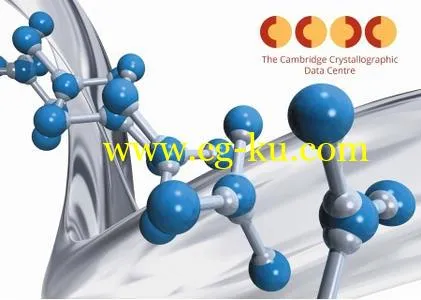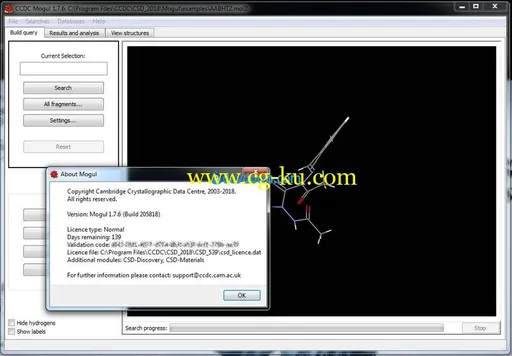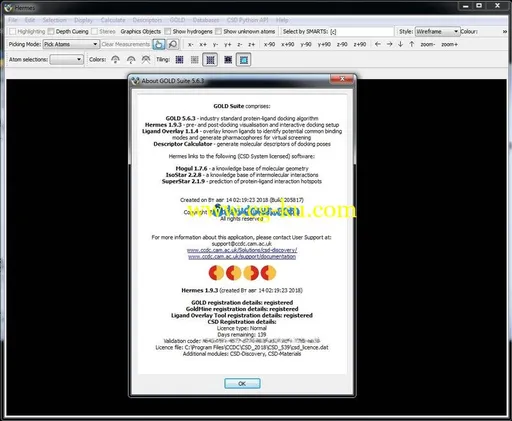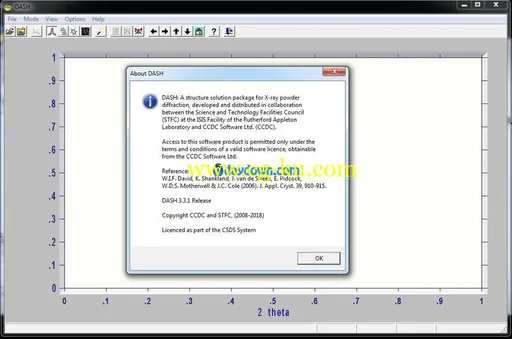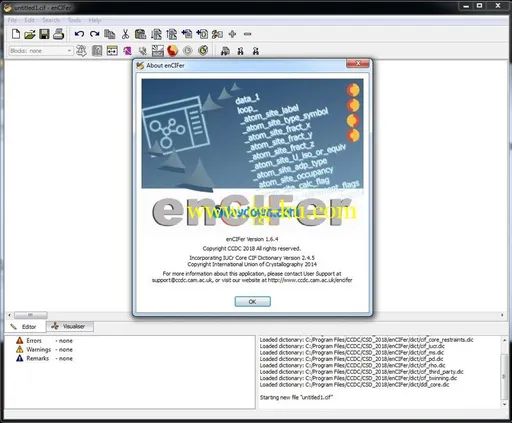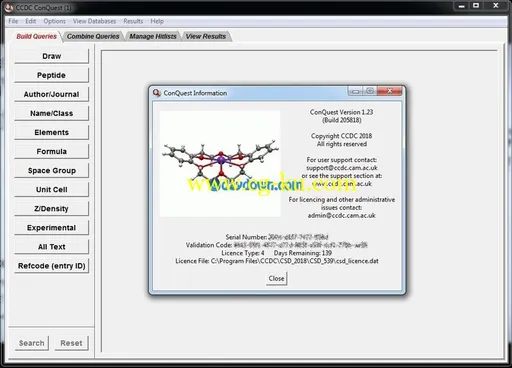The Cambridge Structural Database (CSD) 2018.3 | 48.1 GbCambridge Crystallographic Data Centre (CCDC) is pleased to announce the availability of The Cambridge Structural Database (CSD) 2018.
3, is a powerful and highly flexible suite of software tools and structural knowledge-bases.
The CSD-System enables you to explore and utilise the knowledge contained within more than 900,000 crystal structures.
The Cambridge Structural Database 2018 – What’s New:The CSD – The world’s essential database of crystal structures The Cambridge Structural Database (CSD) is the world’s comprehensive and up-todate database of fully validated crystal structures.
The 2018 release contains over 900,000 entries (CSD version 5.
39) – an increase of more than 60,000 entries! Used by scientists worldwide, the CSD provides the complete crystal structure database for chemists working with organic and metal-organic compounds.
The number of structures solely published through the CSD has continued to grow with a recordbreaking 5,247 new CSD Communications this year.
The 2018 CSD release also contains targeted enhancements to existing entries. Over 62,000 entries have been been updated to give additional information and ensure more consistent search results. Enhancements this year include:– Addition of validated metal oxidation states to over 21,000 entries– Enhancement of over 6,000 historical entries from the 1970s and 1980s– Review of text fields including refinement, disorder, CSD class and bioactivity– Inclusion of article DOIs for older entriesWe have also been working hard to replace the underlying technologies in the CSD system and this has allowed us for the first time to provide direct display within Mercury of the anisotropic displacement parameters (ADPs) for over 220,000 entries.
This is just the start and we will be building on this foundation in future releases.
CSD-System – Harness knowledge-based scienceFor all academic users through CSD-Enterprise and for all industrial CSD usersThe CSD-System brings you essential structural chemistry capabilities to deliver knowledge from the CSD: powerful 2D/3D search, extensive geometry and interaction analysis, high impact graphics, as well as connectivity via the CSD Python API.
This year we have introduced a new suite of features in Mercury to help you visualise, understand and modify the symmetry of crystal structures including the ability to:– View along unit cell or Miller directions– Link directly to International Tables Volume A (Space-group symmetry) online– Reduce symmetry from the current space group to any valid subgroupIn 2017, we have also introduced a new version of WebCSD (v2) which is:– Fully cross-platform – for desktop, tablet and mobile– Current – with up-to-the-minute data updates– Searchable – by 2D structure, unit cell and text/numeric fieldsFurther enhancements to the CSD-System software include:– Improved searching in ConQuest, including more effective reduced cell search– Improved handling of bridged rings in Mogul– A new contact group in IsoStar – organic iodineCSD-Discovery – Discover new moleculesFor all academic users through CSD-Enterprise and for industrial users upgrading to CSDDiscovery or CSD-EnterpriseCSD-Discovery provides in one place all the tools you need for discovering new molecules.
This year we have introduced the new application CSD-CrossMiner – an interactive and highly versatile pharmacophore query tool.
CSD-CrossMiner is provided with ready-touse databases for navigating both the CSD and protein-ligand binding sites from the PDB.
This delivers an overall interactive search experience with application areas including interaction searching, scaffold hopping and the identification of novel fragments for specific protein environments.
Other improvements made to CSD-Discovery include:– Improvements to CSD Conformer Generator to better account for sparse distributions and rarer ring conformations– A new CSD Python API menu in Hermes allowing you to create and run your own Python scripts within the Hermes application– Cavity viewing and highlighting of proteins– Improvements to GOLD for configuration of constraints– Exposure of pharmacophoric-driven constraints for dockingCSD-Materials – Engineer new materialsFor all academic users through CSD-Enterprise and for industrial users upgrading to CSD-Materials or CSD-EnterpriseCSD-Materials helps you explore exciting new materials through analysing intra- and intermolecular interactions within the lattice, allowing you to understand your material’s behaviour and refine its properties.
We have now improved DASH, our application for structure solution from PXRD data, to solve crystal structures faster and more consistently.
New, more effective simulated annealing parameters have been introduced to DASH resulting from a focused research study in collaboration with the University of Reading.
Product:The Cambridge Structural Database (CSD)Version:2018.3*Supported Architectures:32bit / 64bitLanguage:multilanguageSystem Requirements:PC / MacOsx / LinuxSupported Operating Systems:Windows 7even or newer / macOS (64bit) 10.10, 10.11, 10.12 and 10.13/ RedHat Enterprise 6 and 7, CentOS 6 and 7, Ubuntu 12, 14 and 16Size:48.1 Gb* Days remaining: 138注意:可用剩余天数138天注意可用剩余天数剩138天)
